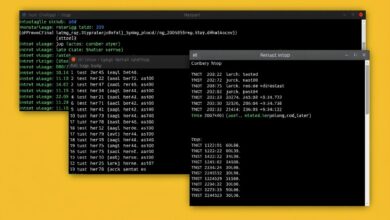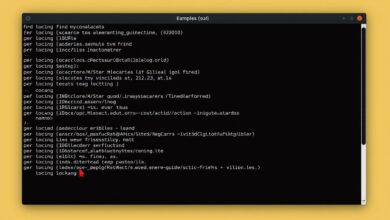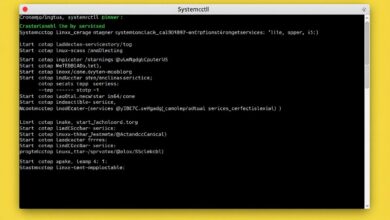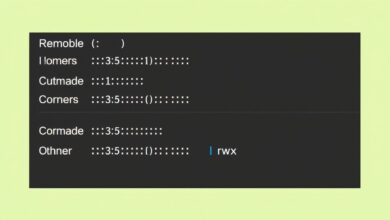Choosing Your Server OS: Ubuntu vs. CentOS Stream vs. Debian Explained

Selecting the right operating system is a foundational step when setting up a server. Among the myriad of choices, Linux stands out for its stability, security, flexibility, and open-source nature. Within the Linux ecosystem, certain distributions have become go-to options for powering servers worldwide. This guide explores three of the most common Linux server distributions: Ubuntu Server, CentOS Stream, and Debian, helping you understand their strengths and ideal use cases.
Why Linux for servers? Its robustness, cost-effectiveness (often free), and vast community support make it ideal for everything from web hosting and databases to cloud computing and enterprise applications. But not all Linux distributions are created equal, especially when server performance and reliability are paramount.
Understanding Key Server Distribution Factors
Before diving into specifics, let’s consider what makes a Linux distribution suitable for server environments:
- Stability: Servers need to run reliably for long periods. Stable distributions prioritize proven software over bleeding-edge features.
- Security: Regular and timely security patches are crucial for protecting server resources and data.
- Support: Access to documentation, community forums, and potentially commercial support options is vital for troubleshooting.
- Package Management: An efficient system for installing, updating, and removing software is essential.
- Hardware Compatibility: Broad support for server-grade hardware is necessary.
- Release Cycle: Predictable release schedules, especially Long-Term Support (LTS) versions, are important for planning upgrades and maintenance.
Deep Dive into Common Linux Server Distributions
1. Ubuntu Server
Derived from Debian, Ubuntu, developed by Canonical, has rapidly gained popularity in both desktop and server markets. Ubuntu Server is specifically tailored for server tasks.
Key Features & Strengths:
- User-Friendliness: Often considered one of the easier distributions to learn and manage, especially for those new to Linux servers.
- Strong Community & Commercial Support: Boasts a massive user community and extensive documentation. Canonical also offers paid support options (Ubuntu Pro).
- Regular Release Cycles: Offers Long-Term Support (LTS) releases every two years, supported for five years (extendable with ESM), providing a balance between new features and stability. Interim releases occur every six months.
- APT Package Management: Uses the robust Debian `apt` system, providing access to a vast software repository.
- Cloud Integration: Widely available and optimized on major cloud platforms like AWS, Azure, and Google Cloud.
Best Suited For: Web hosting, cloud deployments, development environments, users seeking a balance of modern features and stability, those who value strong community and commercial support options.
[Hint: Insert image/video of Ubuntu Server command-line interface or common task]2. CentOS Stream (The Evolution from CentOS Linux)
CentOS traditionally stood as a free, community-supported rebuild of Red Hat Enterprise Linux (RHEL). It was highly favored in corporate environments needing RHEL compatibility without the subscription cost. However, the project shifted focus to CentOS Stream, which is now positioned *upstream* of RHEL releases – essentially a rolling-preview development branch.
Key Features & Strengths (CentOS Stream):
- RHEL Proximity: Provides early access to features planned for future RHEL versions.
- Enterprise Focus: Inherits RHEL’s focus on enterprise-grade features and stability, although now in a more continuous delivery model.
- YUM/DNF Package Management: Uses the `dnf` package manager (successor to `yum`), standard in the Red Hat ecosystem.
- Community & Red Hat Backing: Supported by a dedicated community and backed by Red Hat.
Considerations: The shift from CentOS Linux (a stable RHEL clone) to CentOS Stream (a development preview) means it may not suit environments prioritizing the long-term stability of traditional point releases. Organizations seeking direct RHEL clones often look towards alternatives like Rocky Linux or AlmaLinux.
Best Suited For: Developers and organizations wanting early integration with upcoming RHEL features, environments contributing to the RHEL ecosystem, users comfortable with a more continuous update model.
[Hint: Insert image/video of CentOS Stream terminal showing dnf package operations]3. Debian
Debian is one of the oldest and most influential Linux distributions, serving as the foundation for many others, including Ubuntu. It’s renowned for its commitment to free software principles and its legendary stability.
Key Features & Strengths:
- Rock-Solid Stability: Debian’s “stable” branch undergoes rigorous testing, making it incredibly reliable for mission-critical servers.
- Vast Software Repository: Offers one of the largest collections of pre-compiled software packages.
- APT Package Management: The robust `apt` system originated with Debian.
- Strong Community Support: Driven entirely by a dedicated volunteer community.
- Long Release Cycles: Stable releases occur roughly every two years, with long-term support provided by the community and extended LTS efforts.
- Universality: Aims to be a “universal operating system” supporting diverse hardware architectures.
Best Suited For: Users prioritizing stability and reliability above all else, environments where infrequent major upgrades are preferred, advocates for free and open-source software, systems administrators comfortable with a community-driven support model.
[Hint: Insert image/video of Debian command-line or package management]Making the Choice: Ubuntu vs. CentOS Stream vs. Debian
Choosing the right Linux server distribution depends heavily on your specific needs:
- For a balance of modern features, ease of use, strong community, optional commercial support, and excellent cloud compatibility, Ubuntu Server is a leading choice.
- If you need early access to RHEL developments or are integrating tightly with the Red Hat ecosystem and comfortable with a rolling-preview model, CentOS Stream might fit (otherwise, consider RHEL clones like Rocky/AlmaLinux for traditional stability).
- If absolute stability, adherence to free software principles, and a vast software repository managed by a robust community are paramount, Debian is an outstanding option.
Consider your team’s familiarity with specific ecosystems (Debian/APT vs. Red Hat/DNF), your requirements for commercial support, and your tolerance for release cycle frequency. You can learn more about server setups in our related article on basic server configuration.
Conclusion
Ubuntu Server, CentOS Stream, and Debian represent three pillars within the world of Linux server distributions. Each offers a powerful, reliable platform, but they cater to slightly different philosophies and use cases. By understanding their core strengths – Ubuntu’s balanced approach and support, CentOS Stream’s RHEL-upstream focus, and Debian’s unwavering stability – you can make an informed decision that best aligns with your server administration goals and technical requirements.




